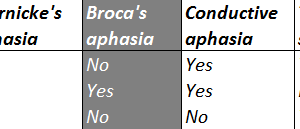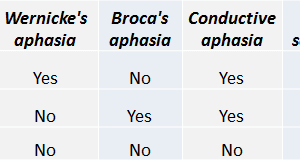tPA for ischemic stroke was first approved in 1996 based on the result of two NINDS studies that compared outcomes of placebo or IV tPA given in the first 3 hours of a stroke.
The studies found that tPA improved outcomes for 1 in 3 patients (number needed to treat = 3 for improvement compared to placebo) and allowed for recovery of near-normal function for 1 in 8 patients (number needed to treat = 8 for near-normal function).
The major side effect of tPA was brain hemorrhage and caused a worse outcome in about 1% of patients.
The longer the delay between the onset of symptoms and the administration of tPA, the less recovery is likely. Time is brain.
Most major hospitals have a customized protocol that sets out their criteria for administering, or not administering, tPA for CVA. The following is list of the most common criteria.
Inclusion criteria
- Patient presents within 3 hours of the onset of symptoms. This usually means the patient must have been observed to be normal less than 3 hours from presentation.
- Focal neurological symptoms are present. If symptoms resolve spontaneously (i.e. T.I.A.) tPA is NOT indicated.
- Patient is at least 18 years old.
- A CT scan, read by a qualified physician, has shown no hemorrhagic stroke.
Absolute exclusion criteria
- Intracranial hemorrhage on non-contrast head CT
- History of hemorrhagic stroke or other intracranial hemorrhage, AVM, intra-cranial neoplasm or aneurysm
- Suspicion of subarachnoid hemorrhage despite normal CT
- CT evidence of CVA affecting more that 1/3 of MCA territory (multi-lobar infarct)
- Uncontrolled hypertension (sBP>185 or dBP>110) despite appropriate attempts to control blood pressure
- Seizure at the onset of stroke that, because of residual post-ictal deficits, may mask underlying neurological status
- Pregnancy
- Tendency to have acute bleeds, with risk factors including:
- Platelets < 100,000/mm3
- Heparin in the previous 48 hours with PTT > 40
- Currently on anticoagulant (eg. coumadin; some criteria include INR > 1.7, others do not have an INR cutoff)
- Other bleeding risks:
- Head or spine surgery within the prior 3 months
- Head trauma within the prior 3 months
- CVA within the prior 3 months
- Arterial puncture at noncompressible site within last 7 days
Relative exclusion criteria
- Severe neurological deficit (NIH stroke scale > 22) or mild deficits (NIH SS <4 with no dysphasia) or spontaneous rapid imrpovement
- Trauma or surgery within the last 14 days
- GI bleed or urinary tract hemorrhage in the previous 21 days
- Acute MI in the previous 3 months
- Dressler’s Syndrome (post-MI pericarditis)
- Hypoglycemia (BS < 50) or Hyperglycemia (BS > 400)
- History of both diabetes and ischemic stroke(s)
References
Hacke W, Donnan G, Fieschi C, Kaste M, von Kummer R, Broderick JP, et al. Association of outcome with early stroke treatment: pooled analysis of ATLANTIS, ECASS, and NINDS rt-PA stroke trials. Lancet. Mar 6 2004;363(9411):768-74.
Albers GW, Clark WM, Madden KP, Hamilton SA. ATLANTIS trial: results for patients treated within 3 hours of stroke onset. Alteplase Thrombolysis for Acute Noninterventional Therapy in Ischemic Stroke. Stroke. Feb 2002;33(2):493-5.
Example hospital tPA checklists can be found at:
http://www.gbhn.ca/ebc/documents/ischemic_stroke_tpa_protocol_inclusion_exclusion_criteria_003.pdf
http://www.icahn.org/files/stroke_inclusion_exclusion_stroke_.pdf




